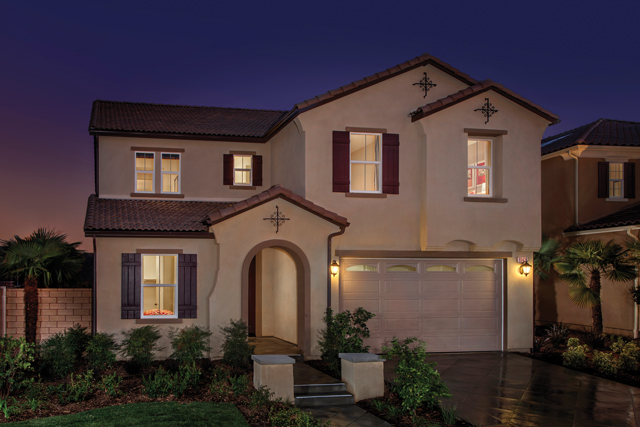
The top home builders in Los Angeles County saw a combined 19 percent boost in sales last year, but a decline in the number of building permits across the region hint that slower times are ahead, according to a Business Journal analysis.
A list of the 25 top residential developers ranked by the number of detached homes and condominiums sold in L.A. County in 2017 found escrows had closed on 2,767 units, compared with 2,325 the prior year.
The top home builder in Los Angeles remains KB Home, which sold 474 mostly detached dwellings last year. It now offers new homes at eight locations in L.A. County, including Lancaster, Palmdale, Santa Clarita, Chatsworth, North Hills, Downey and Gardena.
“Given the land-constrained nature of the market, and rising consumer demand for new homes in Los Angeles County, we are pleased to have experienced over a 40- percent, year-over-year growth in home sales in the area,” said Glen Longarini, president of KB Home’s Los Angeles and Ventura counties’ division, in an emailed response to a request for comment.
The growth isn’t likely enough to loosen up a market where available and affordability are seen as lacking.
Many of the bigger developers – nine of the top 12 on the list – nonetheless saw year-over-year gains, many with dramatic increases.
Sales at Huntington Beach-based Ocean Development Inc., ranked at No. 2, grew 5 percent to 226 units, while activity for D.R. Horton Inc. of Texas rose 266 percent to 205 units. Brookfield Residential Properties Inc. of Canada increased its local sales 38 percent by selling 195 units, City Ventures of Irvine experienced a 68 percent rise in sales to 186 units.
Roughly half of the units sold were detached homes, while the other half were condominiums in higher-cost areas such as West Los Angeles, according to John Mulville, Southern California regional director for Metrostudy, a Hanleywood Co., a real estate tracking firm based in Irvine that compiled the Business Journal list.
Large firms on the Business Journal’s list were “full-speed ahead” last year, analysts said.
“The guys who really have the ability to impact the supply-and-demand equation are the large publically traded companies,” Mulville said. “They’re the ones who really move the needle in terms of development.”
The tight supply seems to have been a factor as builders boosted the average home sales price 11.3 percent to $795,599 while the size of the average home shrank 10 percent to 2,123 square feet.
That smaller home trend came in the form of mostly three-story detached houses built in clusters on smaller lots, Mulville said. He credited another trend – a greater number of older buyers with excellent credit – for making a more stable market, he added.
Headwinds
Analysts and builders said government regulations, neighborhood pushback, and a scarcity of land for development have combined restrict supply and push prices up.
The median sale price for homes in L.A. County at the end of last year was $570,000, according to Irvine-based real estate data tracker CoreLogic Inc., a nearly 10 percent jump from December 2016.
Meanwhile, the number of home building permits issued across the greater Los Angeles area fell to 32,008 units in 2016, then slid again to 31,347 last year after years of steady growth since the Great Recession and peaking at more than 34,000 units in 2015, according to the U.S. Census Bureau, and a preliminary bureau estimate for 2017. Most of these units were apartments and condominiums.
Developers point to numerous fees as financial drags on their projects, but save Measure JJJ for the loudest complaints. Voters passed the city of L.A. ballot measure in late 2016, mandating that affordable housing be included in big projects, especially near transit stops. It also calls for prevailing wages – generally higher than market rates – for local construction workers.
Many developers say the measure has burdened them with costly requirements in exchange for needed zoning and other entitlements, and crimps supply of for-sale housing.
“The underlying story is: we are not building enough homes,” Mulville said. “Builders would build more if they could.”
One such builder is California Home Builders of Canoga Park, which ranked 13 on the Business Journal list after increasing sales 56 percent to 92 homes, according to Metrostudy. Company executives say it grew sales by 75 percent to 98 homes in 2017 – its best year ever.
Now the 23-year-old firm says new building regulations, and Measure JJJ in particular, has forced it to shift its focus from single-family homes to apartments.
“We are disappointed and saddened that we will not be able to continue to producing desperately needed housing at this pace because of an onslaught of new regulations and fees going into effect,” said Shawn Evenhaim, its chief executive, in an email.
“As a businessman and a community-builder, I am not as concerned about our company, which will keep growing and provide high quality workforce housing,” Evenhaim added. “I am more concerned about our great city and housing affordability, which will continue its downward spiral.”
